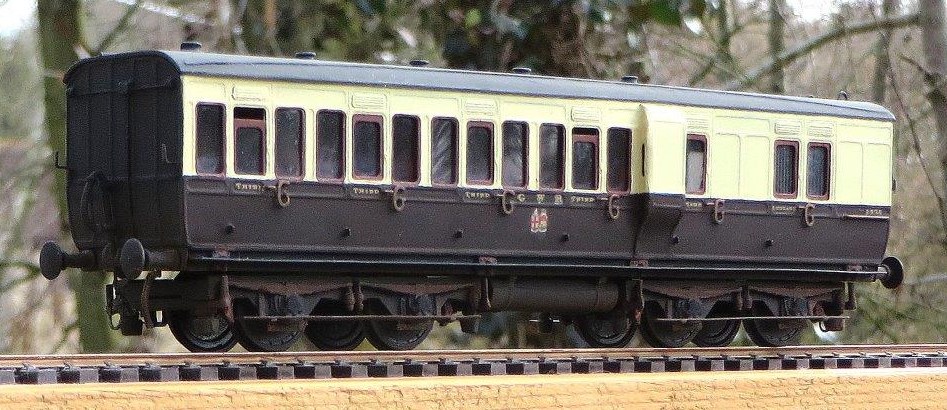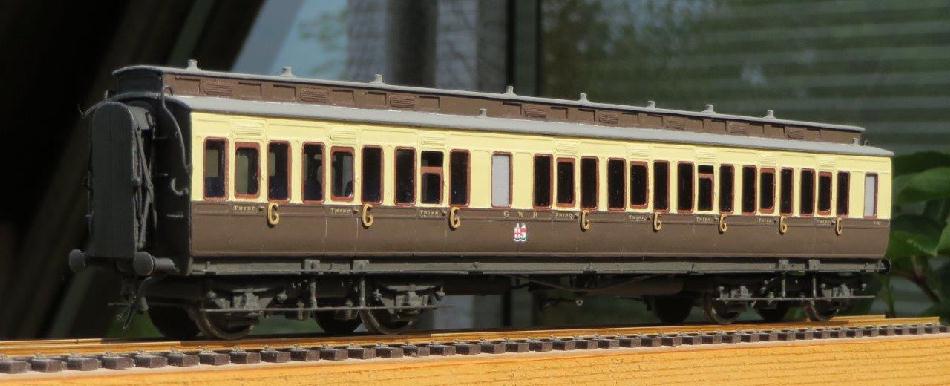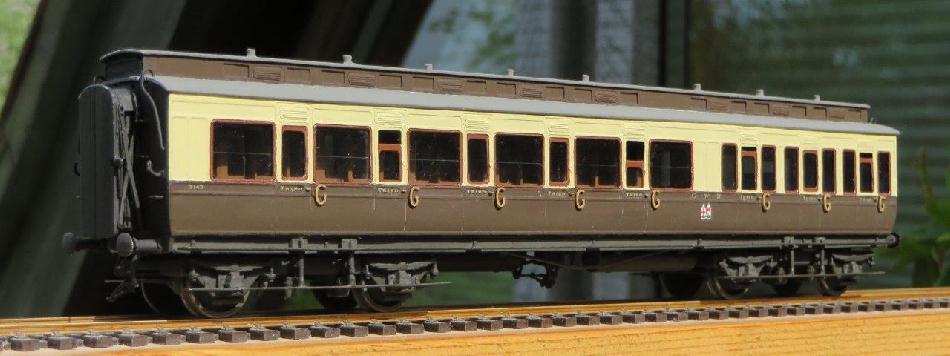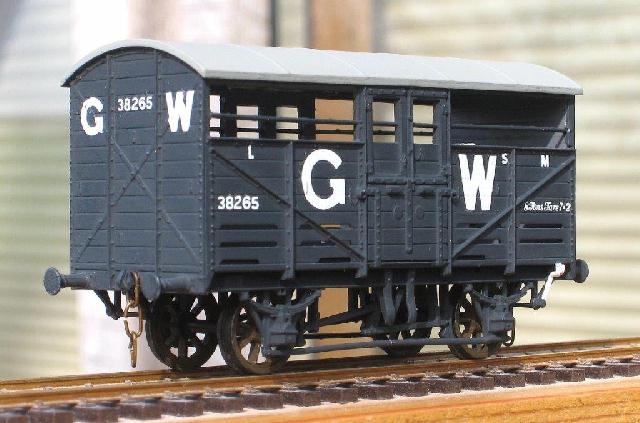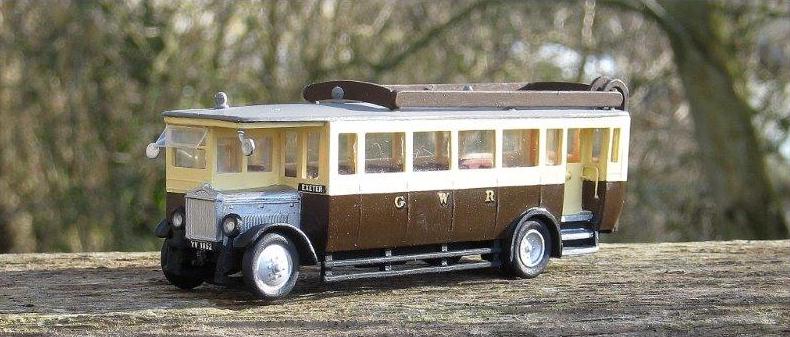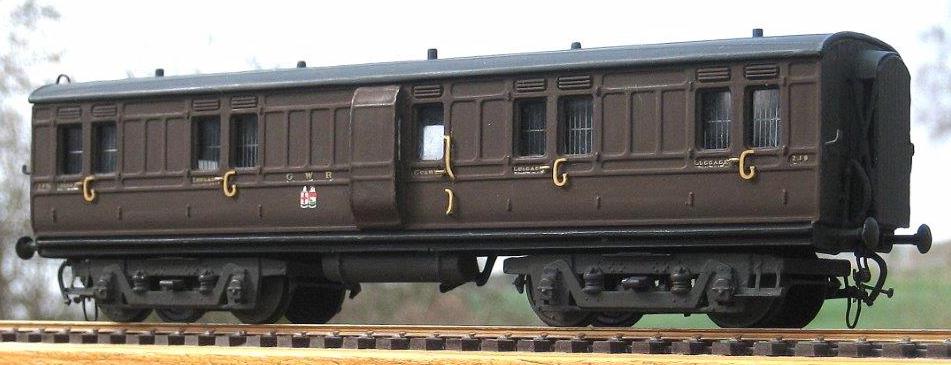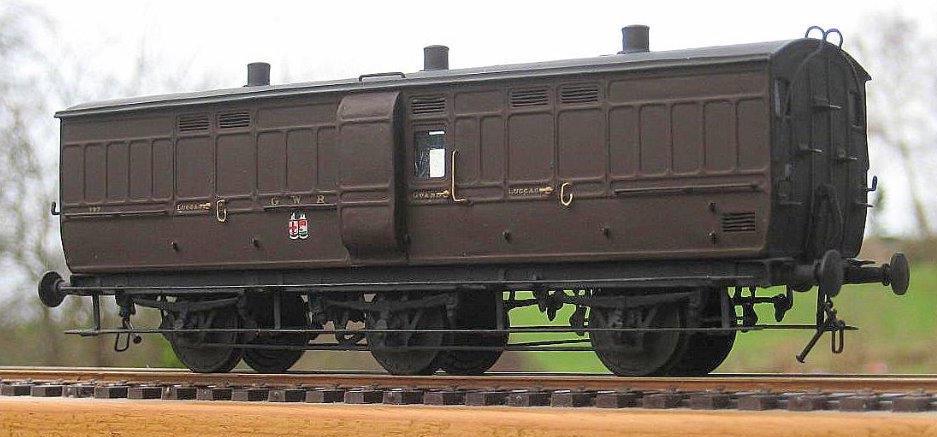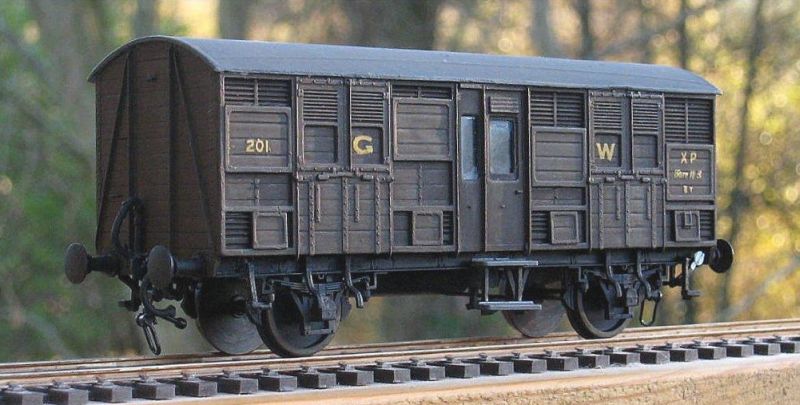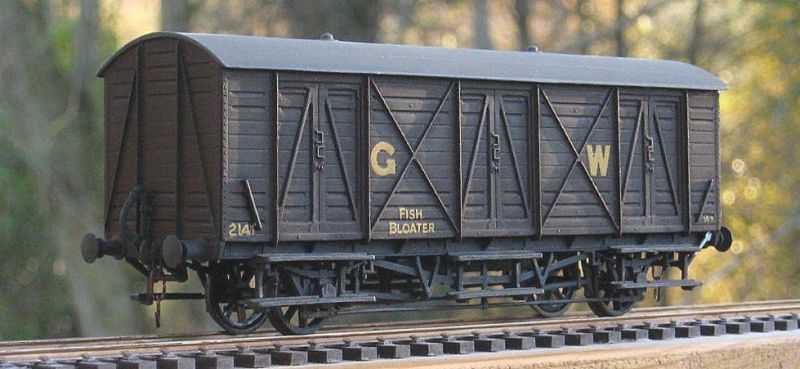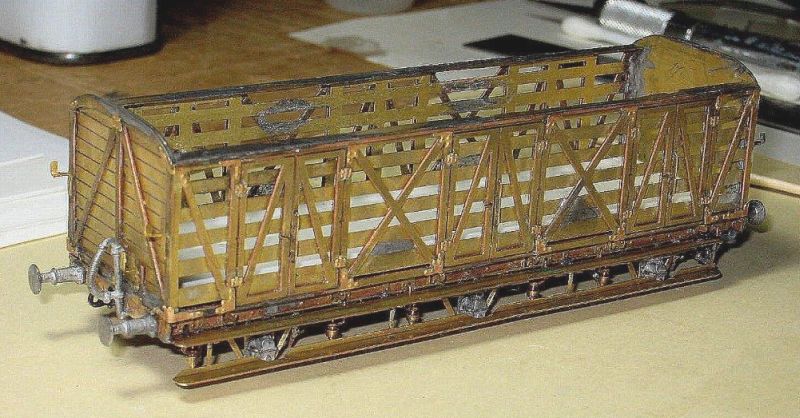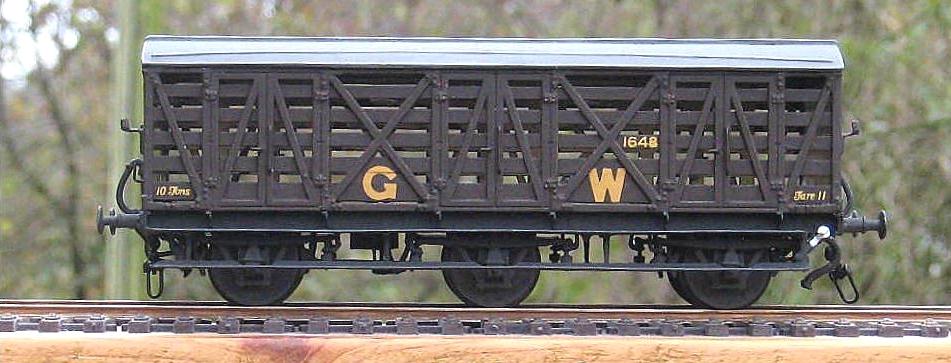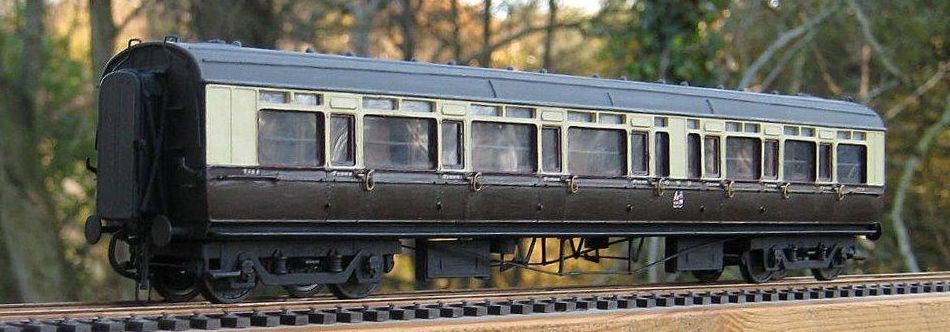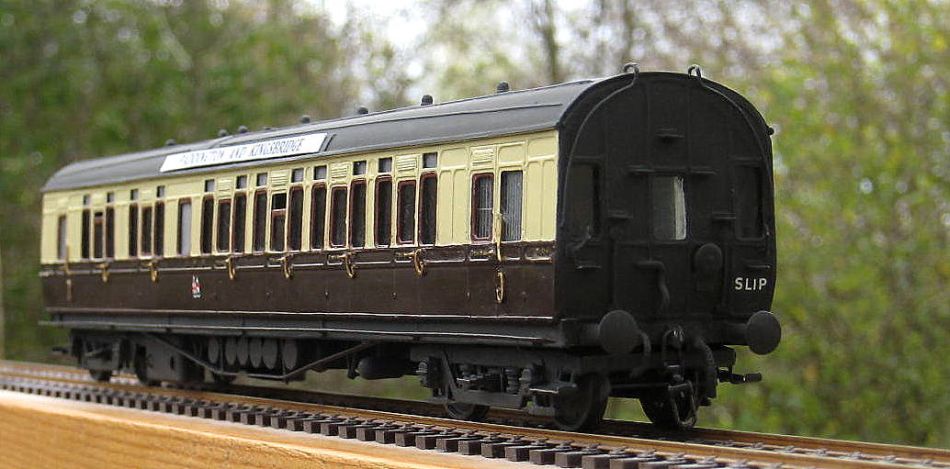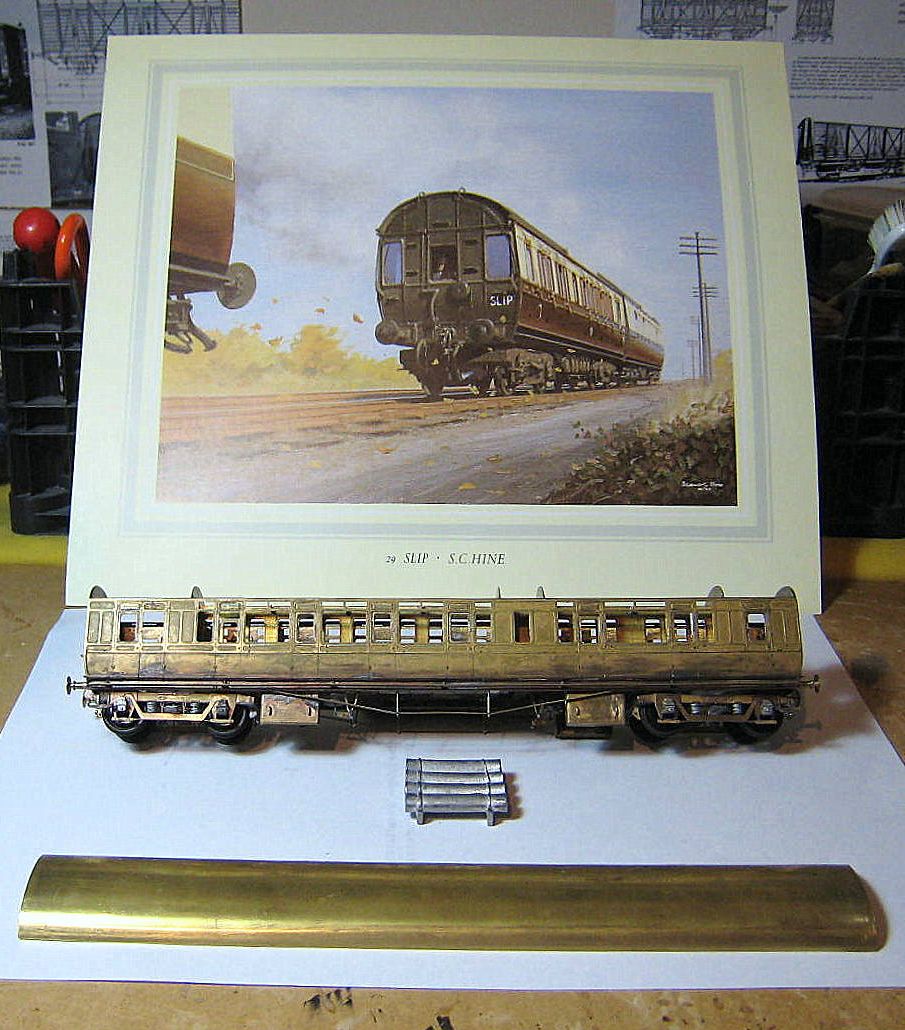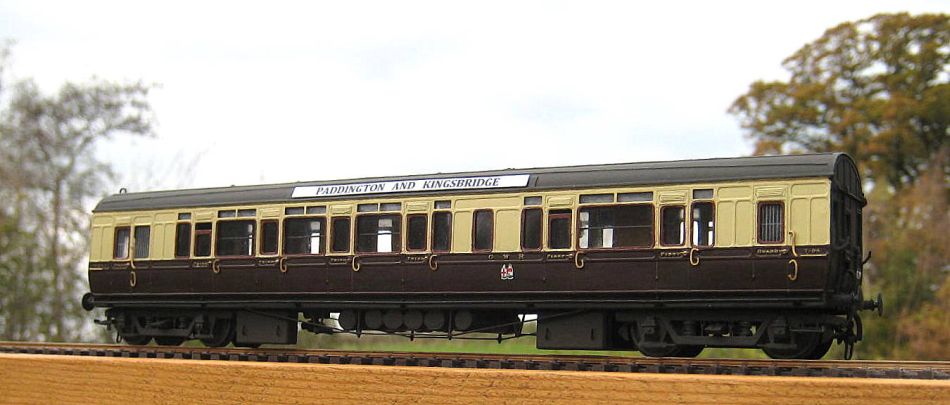| Section Page | Previous Page | Next Page |
Allan Howles' 4mm rolling stock(Allan's locos can be found here, and his layout is Kingsferry)
Allan's nicely weathered 38'6" bogie brake diagram D15, from a Mallard kit. A lot of extra detailing work was needed, the kit having no seating, floor, brakes, vacuum or heating pipes, alarm gear, lamp brackets, couplings or wheels. Most of these extras came from the 'spares box'. The scroll irons are cut short of the bogie cross stays to enable the bogies to rotate. Transfers are HMRS.
Two views of a Mallard Models Full Third clerestory coach diagram C17 of 1898. Corridor connectors are the usual Slaters, supplied by Cooper-Craft. Handles are Comet, couplings by Smiths, and decals are HMRS. It has a coat of matt varnish, as by the 1930s it would be rather aged, and Allan will add more weathering in due course.
Siphon G diagram O11 built from a Mallard kit, with added Slaters corridor connectors, as well as Smiths screw link couplings, David Geen vacuum and steam pipes, and Alan Gibson wheels. This portrayal is of an early gas-lit 1916 vehicle, but purists may query the large 25" G W letters.
Some Cooper-Craft wagons, a W1/5 cattle wagon on the right, and below, a wooden Mink, an N13 coal wagon and an O4 open.
Maudsley ML3 bus, built from a Modelscene (ex-Merit) kit, with some detail added: handrails to the steps, cab sun visor/ventilator, and wing mirrors.
40' passenger brake van diagram K15, which started life as a K's plastic kit. It features replacement door and commode handles (Comet), and the original cast 8'6" bogies were replaced by 9' American from David Geen. Screw-link couplings are Smiths, Mansell wheels are Alan Gibson. Steam pipes have been added. The corridor connections are scratchbuilt from Plastikard. The continuous stepboard was extended, as the original moulding was too shallow, and the missing web to the bottom of the solebar added, both in Plastikard. The end steps are brass chequer plate, also from the spares box, as are the lamp irons, and the end handrails are brass wire. The kit's guards lookout was used as supplied, but most prototypes by this time would have had either had a shorter lookout or the lookout being removed completely and plated over.
Dean V13 6-wheel passenger brake van from a Colin Waite kit, in all-over brown livery, as was common for older brake vehicles in the 1930s. Brass buffers were used to replace the somewhat flimsy cast whitemetal ones supplied in the kit. The oil pots supplied in the kit have been retained, but a more common appearance of these vehicles in this era would have been with gas pots.
Beetle prize cattle wagon diagram W7 made from a Parkside kit
Diagram S6 fish van made from an old Colin Ashby plastic kit. It has been improved in a number of ways including replacement of the the ties between the W-irons.
Bloater fish van diagram S8, from a Parkside kit. The wording and location of 'fish' and 'bloater' varied, perhaps depending on the period.
Dean clerestory lavatory composite diagram E37 made from a Slaters kit. The scroll irons are cut short of the bogie cross-stays below the footboard to enable the bogies to rotate.
57' Collett bow ended full composite and brake composites made from Comet kits
Low Siphon diagram 04 made from a D&S Models kit won on eBay. It is well detailed but the white plastic roof supplied bent to the wrong profile and spoilt an otherwise excellent kit.
57' Toplight Brake 3rd diagram D47, running on fishbelly bogies, and composite diagram E88 running on American bogies, made from Slaters kits. These kits were described in a Guy Williams' article in MRJ 66 in 1993.
Diagram F16 double-ended slip built from a Blacksmith kit. The kit didn't contain a floor, interior, brakes or bell, so quite a lot of the model had to be scratch built. The Cornish Riviera Express contained a number of slips in its down formation, and one of these was slipped at Exeter prior to 1928 for the Kingsbridge branch. After 1928, the CRE made a stop at Exeter, and the Kingsbridge CRE portion became a normal brake composite. Allan's F16 is portrayed in post-1927 livery, so with a tiny bit of modeller's 'time licence' just squeezes into the 'Kingsbridge slip coach' scenario.
|
| Section Page | Previous Page | Next Page |

